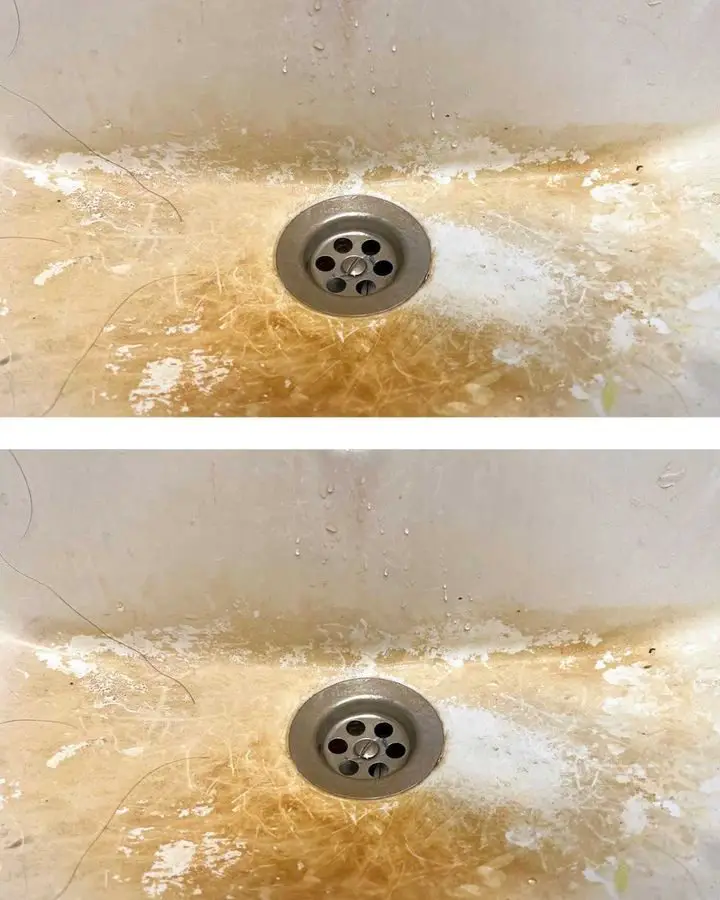Hard water stains, limescale buildup, and rust spots can make any sink look dirty and neglected. These stains not only affect the appearance of your sink but can also lead to long-term damage if not properly treated. If you’ve just moved into a place or your tenant left behind a mess, don’t worry—you can restore your sink to its original shine with the right cleaning methods.
This article will guide you through the best ways to remove lime and rust stains from your sink using common household ingredients and effective commercial solutions.
Understanding Lime and Rust Stains in a Sink
Before tackling the stains, it’s essential to understand what’s causing them.
Lime Deposits (Limescale Buildup)
Lime stains are chalky white or grayish residues left behind by hard water. These deposits are calcium carbonate, a mineral that builds up when water evaporates. If not cleaned regularly, limescale hardens and becomes more difficult to remove over time.
Rust Stains
Rust stains appear as reddish-brown spots or streaks and are usually caused by:
- Iron-rich water reacting with oxygen (oxidation).
- Metal fixtures or pipes corroding, leaving rust residue in the sink.
- Leaving metal objects (like cans or razor blades) sitting in the sink for too long.
Hard water and moisture accelerate rust formation, making regular maintenance essential.
How to Remove Lime and Rust Stains from Your Sink
There are several effective methods to clean lime and rust buildup from sinks. You can use natural cleaning solutions for a gentler, eco-friendly approach or commercial cleaners for heavy-duty cleaning.
1. Vinegar and Baking Soda (Best for Limescale Removal)
White vinegar is acidic, making it excellent for breaking down mineral deposits, while baking soda acts as a mild abrasive to scrub away stains.
How to Use This Method:
- Soak the Sink: Pour white vinegar directly onto the stained areas and let it sit for 10–15 minutes to break down the mineral buildup.
- Scrub with Baking Soda: Sprinkle baking soda over the vinegar-soaked stains and use a sponge or scrubbing brush to scrub the sink.
- Rinse Thoroughly: Wash the sink with warm water and wipe it dry.
This method is safe for stainless steel, porcelain, and ceramic sinks.
2. Lemon and Salt (Best for Rust Stains)
Lemon juice is naturally acidic and dissolves rust, while salt acts as a gentle abrasive.
How to Use This Method:
- Cut a lemon in half and squeeze the juice over the rust stains.
- Sprinkle salt on the stains and let it sit for 10 minutes.
- Scrub with the lemon rind or a sponge to loosen the rust.
- Rinse with warm water and wipe dry.
This method is effective for small rust spots but may need multiple applications for heavier stains.
3. Hydrogen Peroxide and Cream of Tartar (For Stubborn Rust and Lime Stains)
Hydrogen peroxide is a powerful stain remover, and when mixed with cream of tartar, it creates a gentle bleaching effect that removes discoloration.
How to Use This Method:
- Make a paste using 1 tablespoon of hydrogen peroxide and 2 tablespoons of cream of tartar.
- Apply the paste to the stained areas and let it sit for 15 minutes.
- Scrub gently with a sponge or old toothbrush.
- Rinse with warm water and dry the sink.
This method is ideal for white porcelain or ceramic sinks that have developed rust or lime stains.
4. Commercial Rust and Lime Removers (For Heavy Stains)
For severe buildup that natural methods can’t remove, store-bought rust and lime removers are highly effective.
Best Commercial Cleaners for Lime and Rust Stains:
- CLR (Calcium, Lime, Rust Remover) – A powerful solution that dissolves hard water stains and rust instantly.
- Bar Keepers Friend – A mild abrasive cleaner great for stainless steel and porcelain sinks.
- Lime-A-Way – Specially formulated to break down limescale fast.
How to Use Commercial Cleaners Safely:
- Wear gloves to protect your skin from chemicals.
- Ventilate the area to avoid inhaling strong fumes.
- Follow the instructions carefully and never mix different chemical cleaners.
How to Prevent Lime and Rust Stains in Your Sink
Once you’ve cleaned your sink, preventing future stains will save you time and effort.
1. Dry Your Sink After Each Use
Leaving water sitting in the sink allows minerals to settle and form limescale. Use a dry cloth or paper towel to wipe down the sink after use.
2. Use a Water Softener
If you have hard water, consider installing a water softener. This device removes excess minerals, preventing limescale buildup.
3. Clean Your Sink Weekly
Regular cleaning prevents stains from setting in. Use a mild vinegar spray or baking soda scrub once a week to keep your sink spotless.
4. Avoid Leaving Metal Items in the Sink
Rust forms when metal objects stay wet for too long. Remove razor blades, metal cans, or utensils from the sink after use.
Final Thoughts
Lime and rust stains can make even the cleanest kitchen or bathroom look dirty, but with the right cleaning techniques, you can restore your sink’s shine in no time.
For light stains, vinegar and baking soda or lemon and salt work wonders. For tougher stains, try hydrogen peroxide and cream of tartar or commercial rust removers like CLR.
By maintaining your sink regularly—drying it after each use, using natural cleaners weekly, and avoiding standing water—you can prevent lime and rust stains from returning.
With these simple but effective methods, your sink will stay sparkling clean all year long!

